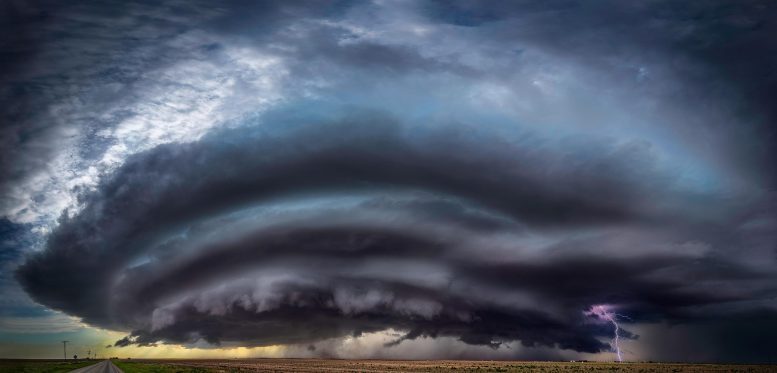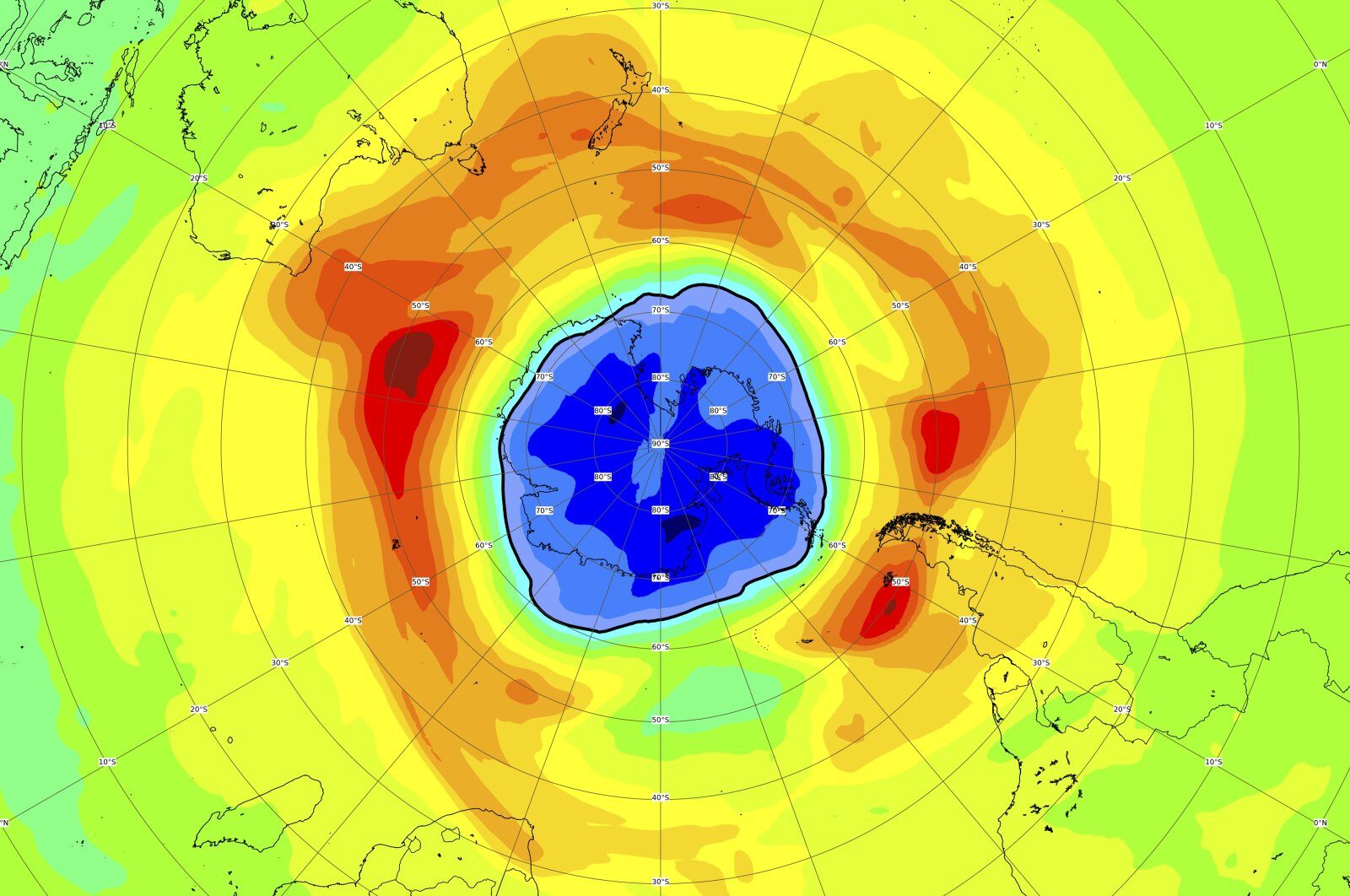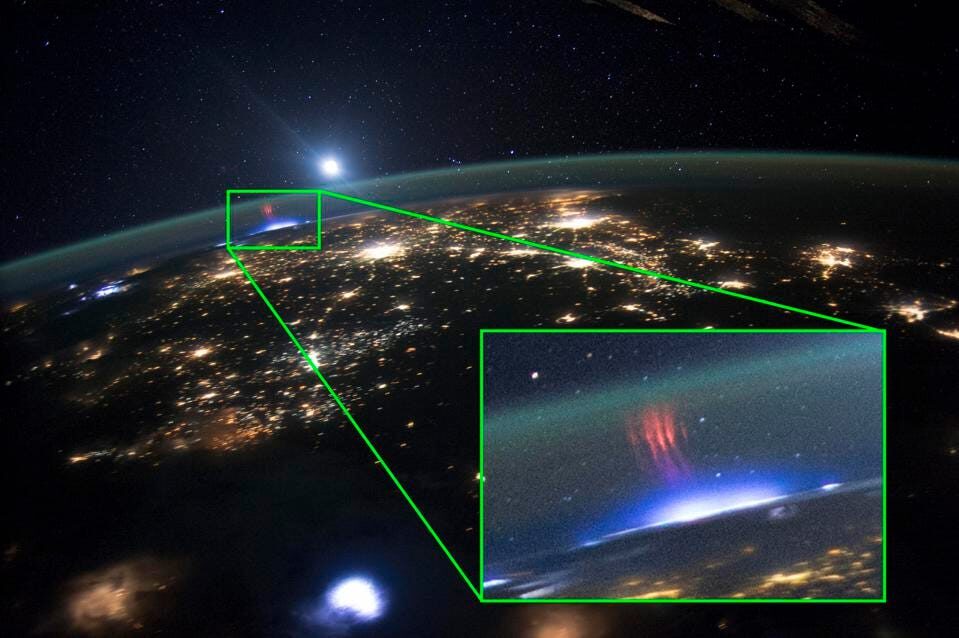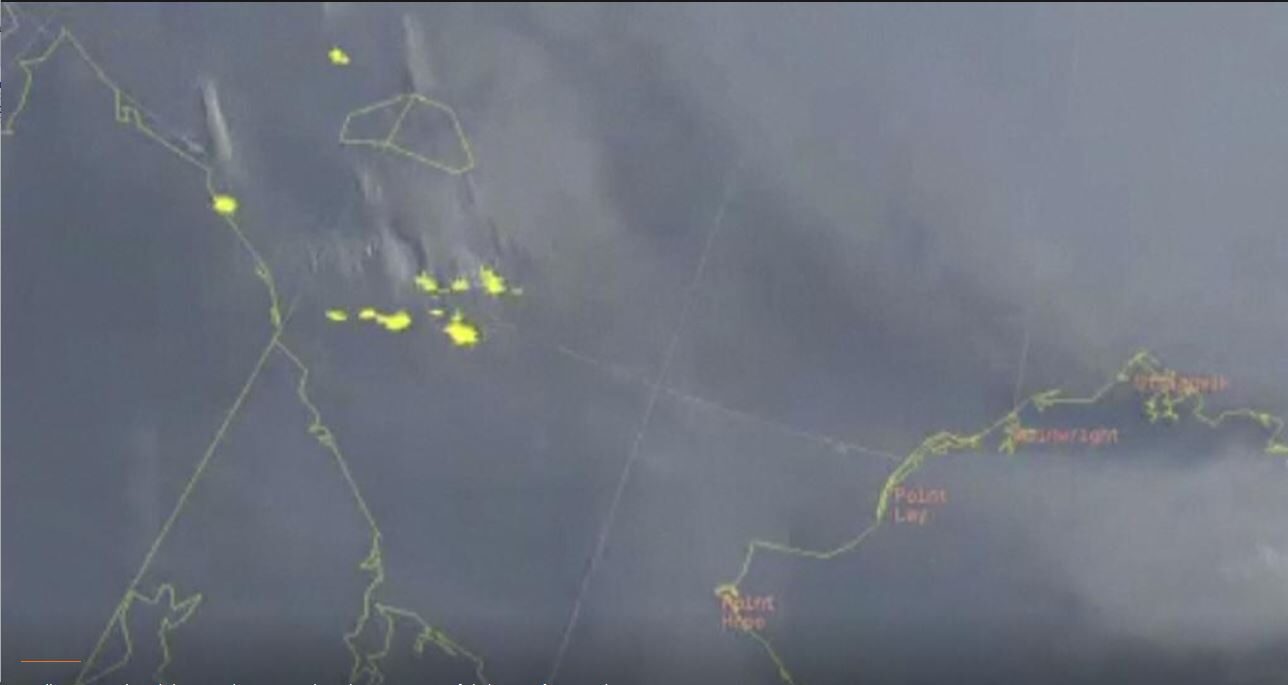The most devastating tornadoes are often preceded by a cloudy plume of ice and water vapor billowing above a severe thunderstorm. New research reveals the mechanism for these plumes could be tied to "hydraulic jumps" - a phenomenon Leonardo Da Vinci observed more than 500 years ago.

© Sci-Tech Daily
When a cloudy plume of ice and water vapor billows up above the top of a severe thunderstorm, there's a good chance a violent tornado, high winds or hailstones bigger than golf balls will soon pelt the Earth below.
A new Stanford University-led study, published Sept. 10 in
Science,
reveals the physical mechanism for these plumes, which form above most of the world's most damaging tornadoes. Previous research has shown they're easy to spot in satellite imagery, often 30 minutes or more before severe weather reaches the ground. "The question is, why is this plume associated with the worst conditions, and how does it exist in the first place? That's the gap that we are starting to fill," said atmospheric scientist
Morgan O'Neill, lead author of the new study.
The research comes just over a week after supercell thunderstorms and tornadoes spun up among the remnants of Hurricane Ida as they barreled into the U.S. Northeast, compounding devastation wrought across the region by record-breaking rainfall and flash floods.
Understanding how and why plumes take shape above powerful thunderstorms could help forecasters recognize similar impending dangers and issue more accurate warnings without relying on Doppler radar systems, which can be knocked out by wind and hail - and have
blind spots even on good days. In many parts of the world, Doppler radar coverage is nonexistent.
"If there's going to be a terrible hurricane, we can see it from space. We can't see tornadoes because they're hidden below thunderstorm tops. We need to understand the tops better," said O'Neill, who is an assistant professor of Earth system science at Stanford's
School of Earth, Energy & Environmental Sciences (Stanford Earth).




Comment: 'Unprecedented' heatwaves may be occurring, but this is in tandem with extreme drought, epic flooding, alongside a variety of other unusual phenomena, including Earth's weakening magnetic field, none of which were forecast by those pushing the 'climate crisis' agenda. Moreover, even the ideologically blinded climate scientists have had to admit recently that extreme cold snaps are increasing, with numerous studies showing that our planet is, overall, cooling, and that we appear to be entering an ice age.
During the last little ice age, sunspot numbers decreased significantly, and it's likely that the real driver to the changes we're seeing on our planet today, and on others, is again due to waning solar activity as we enter a grand solar minimum.
See also:
- Cosmic climate change: 'Space plasma hurricane' observed in ionosphere above North Pole!
- Energy from solar wind favors the north, surprising scientists
- The Seven Destructive Earth Passes of Comet Venus
- Planet-X, Comets and Earth Changes by J.M. McCanney
- Gulf Stream System at its weakest in over a millennium, last significant decline recorded during the little ice age
- Electric currents driven by solar wind create Saturn's auroras, heat planet's atmosphere - NASA
And check out SOTT radio's: